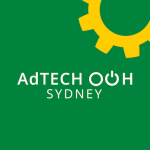In this opinion piece, Joe Copley, Seedooh‘s Managing Director explores the immeasurable contribution of #OOH.
 As a population, we are measuring progress very cautiously against the most important success metric of all – the curve – and it’s going OK, so far, for those of us in ‘the lucky country’.
As a population, we are measuring progress very cautiously against the most important success metric of all – the curve – and it’s going OK, so far, for those of us in ‘the lucky country’.
As a lifelong enthusiast of media and communications, I can’t help but also think about measurement of the tiny bit of the puzzle that I am most familiar with.
Over the past few months, it has been more critical than ever to get the right messages to Australians at the right time and in the right places. As part of the COVID-19 response, Out-of-Home (OOH) media has been instrumental in a colossal effort to educate, inform and influence behaviour quickly, efficiently and en masse.
Every other media type and communication channel has also been used well, in perhaps the largest scale, most single-minded, three-month ‘campaign launch’ in history – with the most engaged audience ever.
Much of the OOH exposure has been in retail, public transport or public space environments where message salience, leading to behavioural change, has been so urgently required. As movement becomes less restricted, I expect this will continue with more environments added, sometimes at short notice. Offices, pubs and airports, for example.
For the last 12 weeks, COVID-19 related messages from the Federal and State governments in Australia have averaged millions of plays a week on digital screen networks (where every play is independently verified by Seedooh). Hundreds of thousands of hours of viewable exposure, precisely measured on each screen.
Nobody will ever know exactly how many people saw these OOH messages, or how many times, or what impact the OOH had on behaviour. However, I would suggest that the contribution has been immeasurable (which is different from unmeasurable). While reach, frequency and effectiveness were also unmeasurable in this case, I believe this will change in the future.
Under normal circumstances, Digital Out-of-Home (DOOH) screens can reach an estimated 65% of the population weekly in key environments such as roadsides, public transport, retail, airports, offices, cafes, pubs, gyms, universities, doctors’ offices, pharmacies, service stations, stadiums and cinemas.
Of course, audiences have not been normal during lockdown, and it’s important to remember that OOH audiences will always be an estimate, especially when measured at scale across multiple formats. Work is ongoing around the world, including here in Australia, to make those estimates as informed as possible. One of the many important variables is what’s known as the ‘impression multiplier’.
The impression multiplier is important because DOOH is being seriously considered as an extension of digital / display or ‘programmatic’ campaigns. In that discipline, one ad ‘served’ traditionally equals one impression (unless it’s a bot, or un-viewable).
In OOH, each message on each sign could potentially be seen by something between ‘no-one’ to ‘millions of people’ every second (consider a perimeter board or screen in view of the TV cameras at a large sporting event). For every sign or screen, the impression multiplier is further variable by day, time of day, traffic speed or dwell time, weather conditions, lockdown status, viewing distance etc. This makes audience measurement difficult.
The base data is the existence of the message on the sign; for a week, a month, or six to 10 seconds at a time (in the COVID-19 DOOH example). This is a factual foundation, upon which other measurement metrics can be built, including audience estimates.
Whatever audience was reached, in the case of COVID-19 each message has been clear: stay at home, wash your hands, keep your distance, download the app, protect health workers, and so on.
And each part-second in view had the potential to; reinforce the overall message, create an immediate action (eg take a step back, or cough into your elbow), start a conversation, seek more information online, or generate numerous other conscious or subconscious outcomes.
Imagine if there had been no OOH. Would we have all been so aware? So prepared? So attentive? So collaborative? So safe?
Some brands have also made the most of OOH for very relevant messaging to people spending more time at home – for example, a reminder to subscribe, tune in, cook well, order in, or buy treats.
For these brands and the various government campaigns, the estimated audience data is only a small part of the conundrum. Did their message start a conversation? Prompt a purchase or a Google search? An app download? And did repeated exposure change awareness, understanding, perception and behaviour?
In 10 years as an OOH specialist, I have seen, conducted and contributed to numerous case studies that have proven some or all of these things. Each study took many hours of manual data collection and wrangling, but (potential confirmation bias aside), I can confidently tell you that OOH done well, usually works really well – and OOH done badly, works sometimes.
As the momentum returns to this market and others, I believe it’s likely that more brands, as well as governments, will recognise the power, influence and contribution of OOH done well – as it was during the early months of COVID – and then seek ways to do it better. The latter can only really be done by examining how it works for your message, in your market, in your category, for your specific objectives.
A big step towards this is the ability to connect relevant data-sets at scale, so timely decisions can be made based on actionable insights. ‘AdTech’ is required for this, which creates strong foundations for a connected future, with inputs specific to OOH. Note that OOH is very different from #digital, where AdTech was ‘born’, but is inextricably related because the ‘consumers’ are the same (unless they’re bots).
We’ll be discussing measurement in some detail at the AdTECH:OOH – Sydney conference on September 23rd. We’re hoping to see plenty of marketers in attendance, as well as publishers, agencies and AdTech providers. The next few years is a window in time to establish foundational standards and parameters that will ensure that OOH can be a valued plug-in to the automated, omni-channel future that is fast approaching.
The journey has to start with an alignment throughout the supply chain of the key variables to standardise, and how to connect them. If marketers don’t pay some attention now, they may find that the supply chain makes its own decisions, the way it has done in other digital channels over the last decade. That would be a missed opportunity.
In the meantime, well done OOH for the immense, immeasurable contribution in the first few months of our COVID-19 world.
 The AdTECH: OOH – Sydney Conference will take place on Wednesday September 23, 2020. The venue is the same as last year, HOYTS Broadway
The AdTECH: OOH – Sydney Conference will take place on Wednesday September 23, 2020. The venue is the same as last year, HOYTS Broadway
Greek Street &, Bay Street, Broadway, Sydney, NSW 2007 Australia
The event is being chaired by Seedooh’s Joe Copley.

Follow DailyDOOH